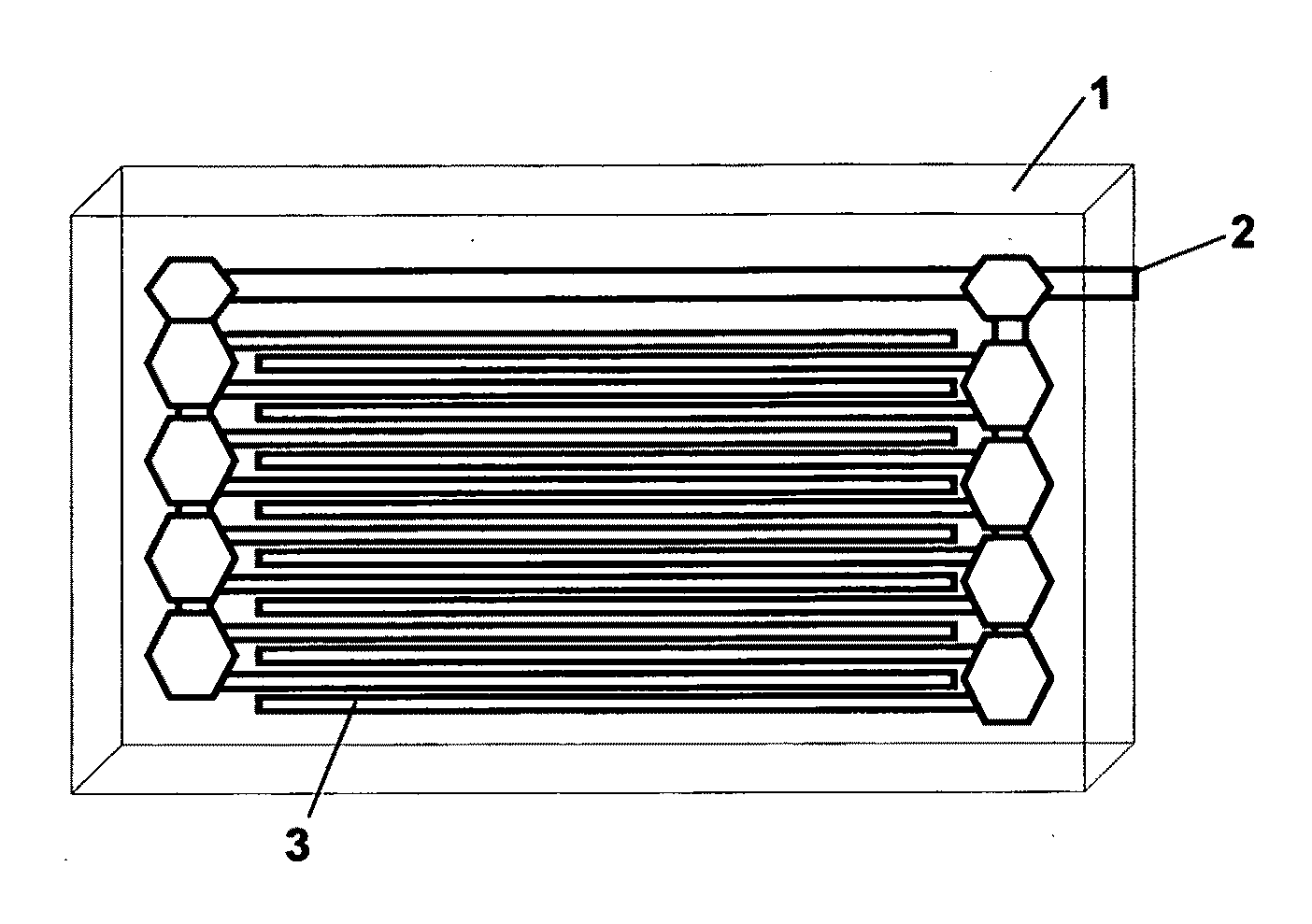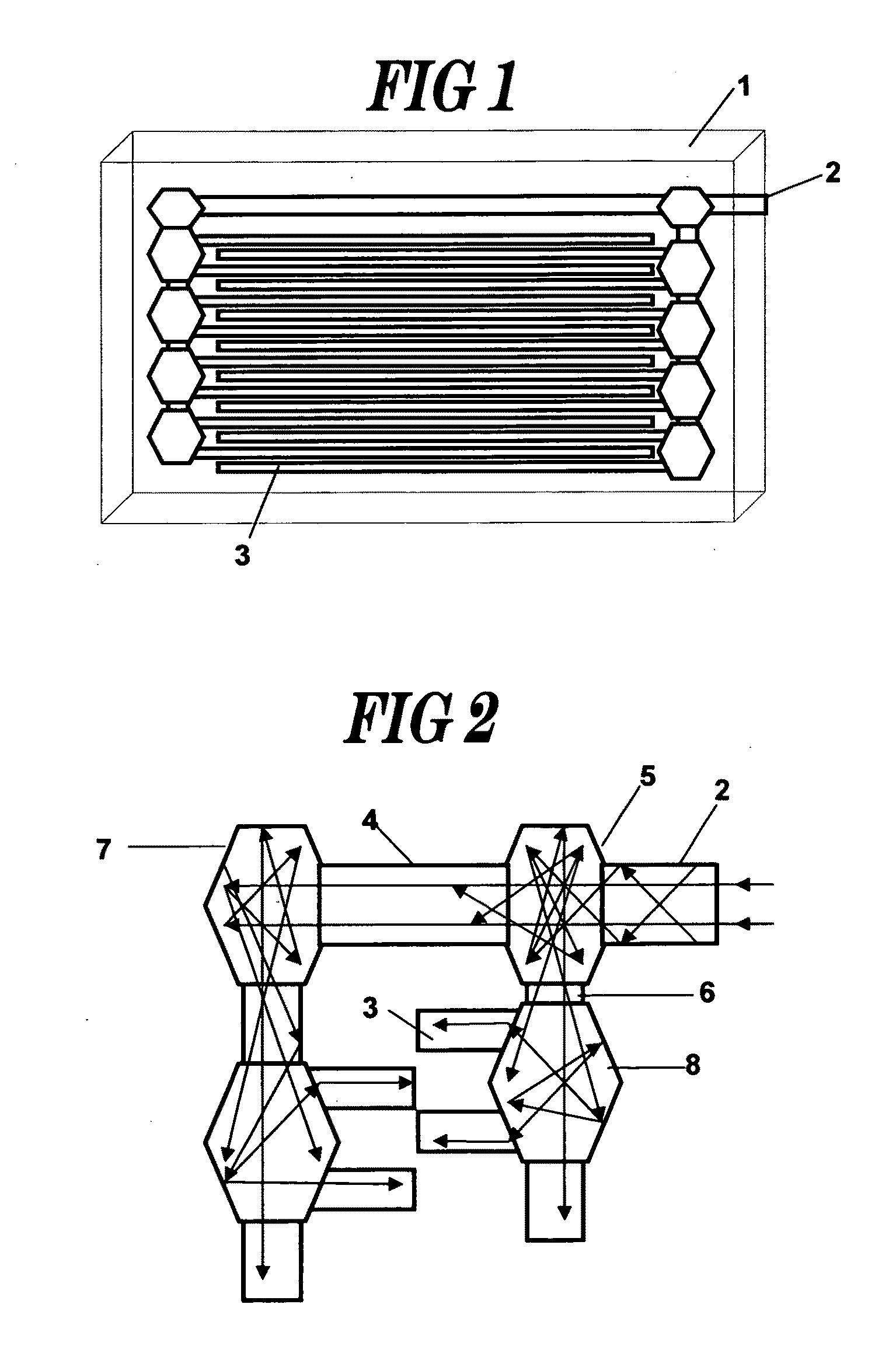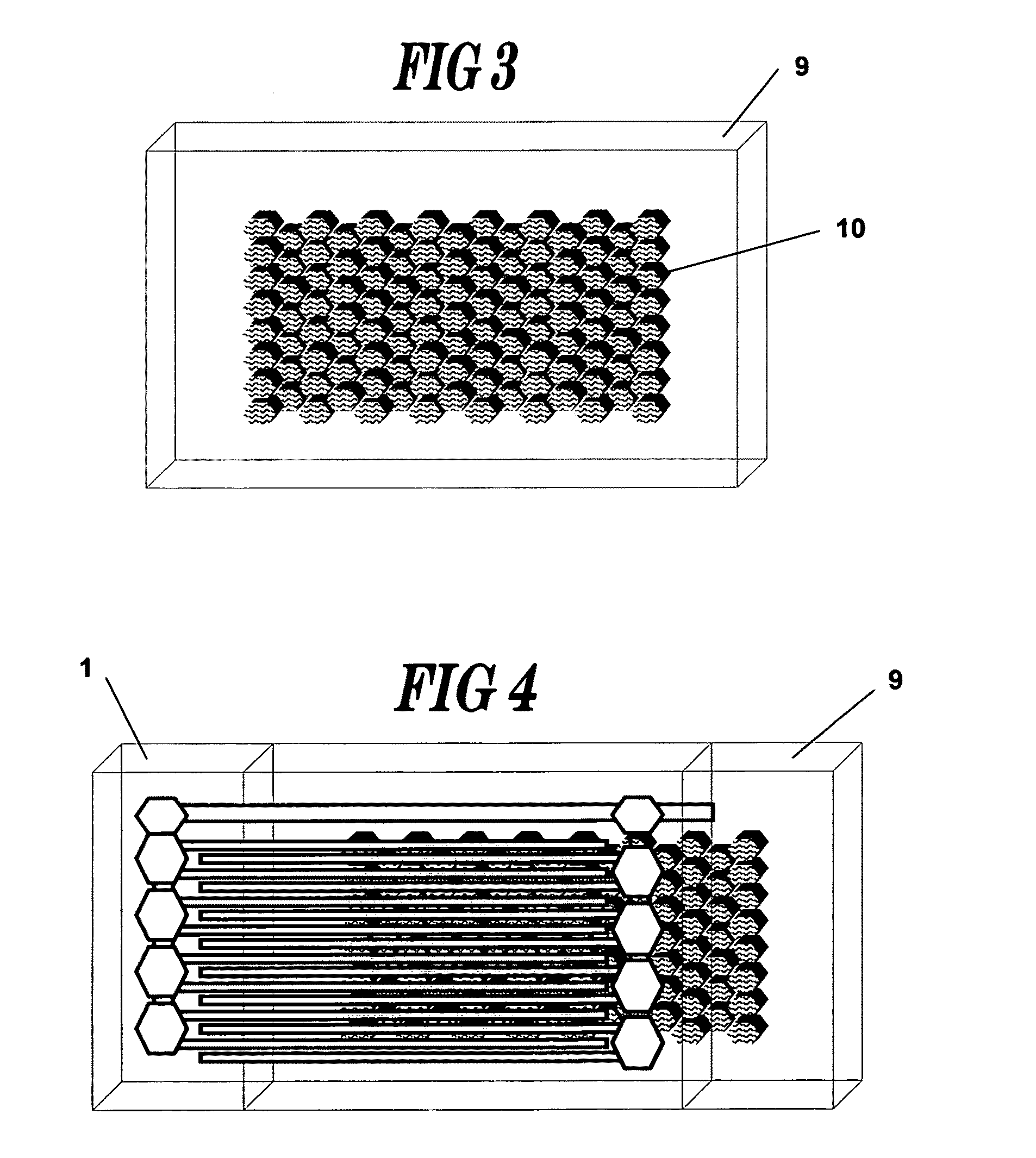Solar hybrid agricultural greenroom
- Summary
- Abstract
- Description
- Claims
- Application Information
AI Technical Summary
Benefits of technology
Problems solved by technology
Method used
Image
Examples
Embodiment Construction
[0043]FIG. 1 illustrates the light emitting array (LEA) 1 with a single light input port 2 which allows the conduction of light directly to the several light emitting conduits 3.
[0044]FIG. 2 illustrates the internal light reflection orientation utilized in the light emitting array (LEA). Filtered and modified light enters the input port 2 and is transmitted through the first internal reflecting unit 5 to the primary non-emitting light conduit 4 where it is re-directed through a second internal reflecting unit 7. Light is also re-directed within the first internal reflecting unit 5 through a vertical non-emitting light conduit 6 to another internal reflecting unit 8 where it is re-directed to one of two light emitting conduits 3. It also passes through the internal reflecting unit 8 to another portion of the light emitting array where the process is repeated until all light emitting conduits are served.
[0045]FIG. 3 illustrates the solar cell array (SCA) 9 which houses an array of sol...
PUM
 Login to View More
Login to View More Abstract
Description
Claims
Application Information
 Login to View More
Login to View More - R&D
- Intellectual Property
- Life Sciences
- Materials
- Tech Scout
- Unparalleled Data Quality
- Higher Quality Content
- 60% Fewer Hallucinations
Browse by: Latest US Patents, China's latest patents, Technical Efficacy Thesaurus, Application Domain, Technology Topic, Popular Technical Reports.
© 2025 PatSnap. All rights reserved.Legal|Privacy policy|Modern Slavery Act Transparency Statement|Sitemap|About US| Contact US: help@patsnap.com



